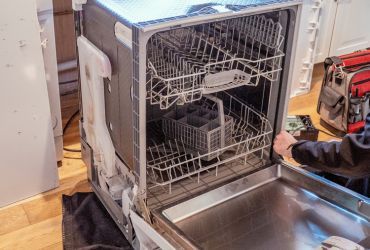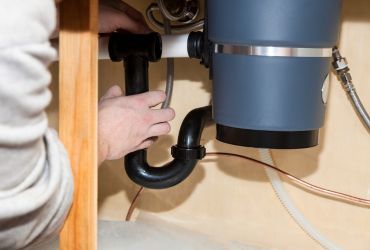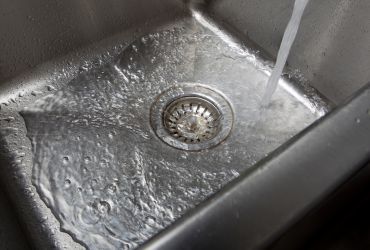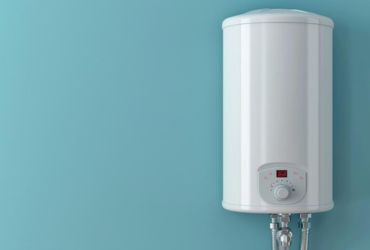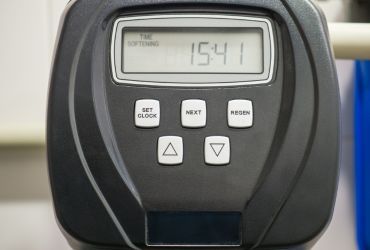How Invasive Is Repiping Your House?
Although repiping a house might seem like an enormous project, it can be less intimidating if you know what it involves. Your home’s pipes may need to be replaced if you’ve observed problems like rusty water, low water pressure, frequent leaks, or strange discoloration in the water. In order to guarantee a dependable water system and avoid further issues, repiping basically entails replacing the outdated, deteriorated pipes with new ones. What can you anticipate if you choose to repipe your house, and how intrusive is this procedure? Let’s examine the specifics.
Why Would You Need to Repipe?
It’s important to comprehend why repiping is sometimes necessary before discussing how intrusive it is. Pipes naturally deteriorate over time. Pipes in older homes are frequently composed of materials like polybutylene or galvanized steel, which are prone to rust, corrosion, and leaks. Poor installation, subpar materials, or foundation shifting continue to cause plumbing problems in more modern homes. By installing brand-new pipes composed of sturdy materials like PEX (cross-linked polyethylene) or copper, repiping guarantees that all of these problems are resolved.
The Planning Phase: Inspection and Consultation
Repiping begins with an inspection and consultation with a professional plumber. At this stage, the plumber will evaluate the plumbing system in your house, look for any signs of water damage that may already be there, and estimate the scope of work that will be needed. They could additionally identify any areas or fixtures that might be compromised. Since this planning stage just entails a comprehensive inspection and mapping out of your home’s water lines.
How Invasive Is This Step?
Since no physical work is being done at this stage, there isn’t any mess. Based on the size of your house and the kind of pipes required, the plumber may inquire about your water problems and offer an estimate.
The Preparation Phase: How the Repiping Process Works
The plumbers will start with moving furniture, covering floors, and laying down protective covers to prevent damage before the actual work starts on your house. They might also turn off the water supply for a while. Although this may cause some inconvenience, it is an essential step in keeping your house tidy and safe while the project is underway.
How Invasive Is This Step?
The preparatory phase is a little intrusive. Moving a few things and being without water for a day or two are examples of short-term inconveniences, but nothing harmful or damaging.
The Access Phase: Cutting Points in Walls
Plumbers must make access points in your walls, floors, or ceilings to reach the outdated plumbing components and replace the pipes. These access points are typically small cuts made strategically near plumbing fixtures like sinks, showers, or toilets.
How Invasive Is This Step?
The procedure becomes increasingly intrusive at this point. Although professional plumbers are adept at reducing the impact of cutting into walls, this still results in dust, noise, and disturbance. To help restrict the sections of your home that are impacted, technicians will meticulously measure and design each cut to minimize the number of access points.
The Replacement Phase: Placing the New Pipes
After creating access points, the plumber will start removing the old pipes and installing the new ones. Depending on the size of your house and the intricacy of your plumbing system, this stage can last a couple of days. To guarantee that your new water lines are safe and operational, professionals replace every pipe that supplies water to fixtures in your house.
How Invasive Is This Step?
Replacing the pipes is quite intrusive because it entails going about your house and removing portions of the old pipes to install new ones. This can be noisy. However, plumbers follow an organized strategy to complete the job quickly and effectively.
The Patching Phase: Covering Up the Walls and Cleanup
After installing the new pipes, the plumber will repair any openings they made in your walls, ceilings, or floors. This entails patching holes, putting up plasterboard, and, if necessary, repainting to blend in with your current interior design.
How Invasive Is This Step?
Patching and cleaning up are mildly invasive, as they involve wall repair and possibly some dust. However, this step is essential to restoring your home to its original condition, and professional plumbers are careful to ensure the final result looks seamless.
What to Expect During Repiping
Repiping your home can take anywhere from a few days to a week, depending on the size of your home, the type of pipes being used, and the complexity of the plumbing layout. Here’s a summary of what you can expect in terms of day-to-day impact:
- Water Disruption: Your water supply may be temporarily shut off during the initial stages and while new pipes are installed. However, most plumbers try to limit this to only a few hours each day so that you can still have access to water when you need it.
- Noise: Cutting access points, removing old pipes, and installing new ones can create some noise. If you work from home or have small children, it may be helpful to arrange for alternative plans or inform family members about the project in advance.
- Dust and Debris: Repiping requires cutting into walls and ceilings, which can create dust and debris. Professional plumbers use coverings and cleanup tools to manage dust as much as possible, but it’s a good idea to cover any furniture or items you want to keep dust-free.
Why Choose to Repipe?
While repiping is an invasive process, it offers significant benefits for homeowners:
- Improved Water Quality: New pipes help improve the taste, color, and safety of your water, especially if you’ve experienced rusty or discolored water due to corroded pipes.
- Increased Home Value: Having new, durable pipes can increase the value of your home. Buyers tend to favor homes with modern plumbing systems, as it signals that the property is well-maintained and less likely to need major repairs soon.
- Long-Term Savings: Older pipes are prone to leaks, which can lead to costly water bills and water damage repairs. By investing in new pipes, you can save money on utilities and avoid frequent repair expenses.
- Better Water Pressure: Repiping can solve issues related to low water pressure, making showering, washing dishes, and doing laundry more comfortable and enjoyable.
How to Prepare for a Repiping Project
If you decide to go forward with repiping, a few steps can help make the process smoother:
- Clear Work Areas: Remove any furniture or belongings near plumbing fixtures, like under-sink cabinets, to facilitate plumbers’ access.
- Plan for Water Usage: If water is going to be off for extended periods, plan ahead by filling up containers for drinking, cooking, and basic hygiene.
- Protect Valuables: Cover any valuable furniture or appliances with protective sheets to prevent dust from settling on them during the work.
Is Repiping Worth the Invasiveness?
While repiping can be a significant project, understanding the process helps set realistic expectations. The invasiveness is relatively low compared to the long-term benefits of a dependable, efficient plumbing system. Choosing to invest in repiping is ultimately an investment in the health, safety, and value of your home.
If you’re unsure about whether you need repiping, consider consulting a professional who provides top-tier plumbing services. They can provide a detailed inspection and recommend the best course of action for your home’s unique plumbing needs. With experienced plumbers, the job can be done efficiently and respectfully, allowing you to enjoy reliable water and improved home value for years to come.
FAQ
What does repiping a house involve?
Repiping involves replacing the existing plumbing pipes throughout your home, either partially or entirely, to improve water flow, prevent leaks, and address aging or damaged pipes.
How long does repiping usually take?
The duration depends on the size of your home and the complexity of the job. On average, repiping can take 2-5 days, but larger homes may require more time.
Will walls need to be opened for repiping?
Yes, repiping typically requires cutting into walls, ceilings, or floors to access the pipes. Professional plumbers aim to minimize disruption and make precise cuts.



